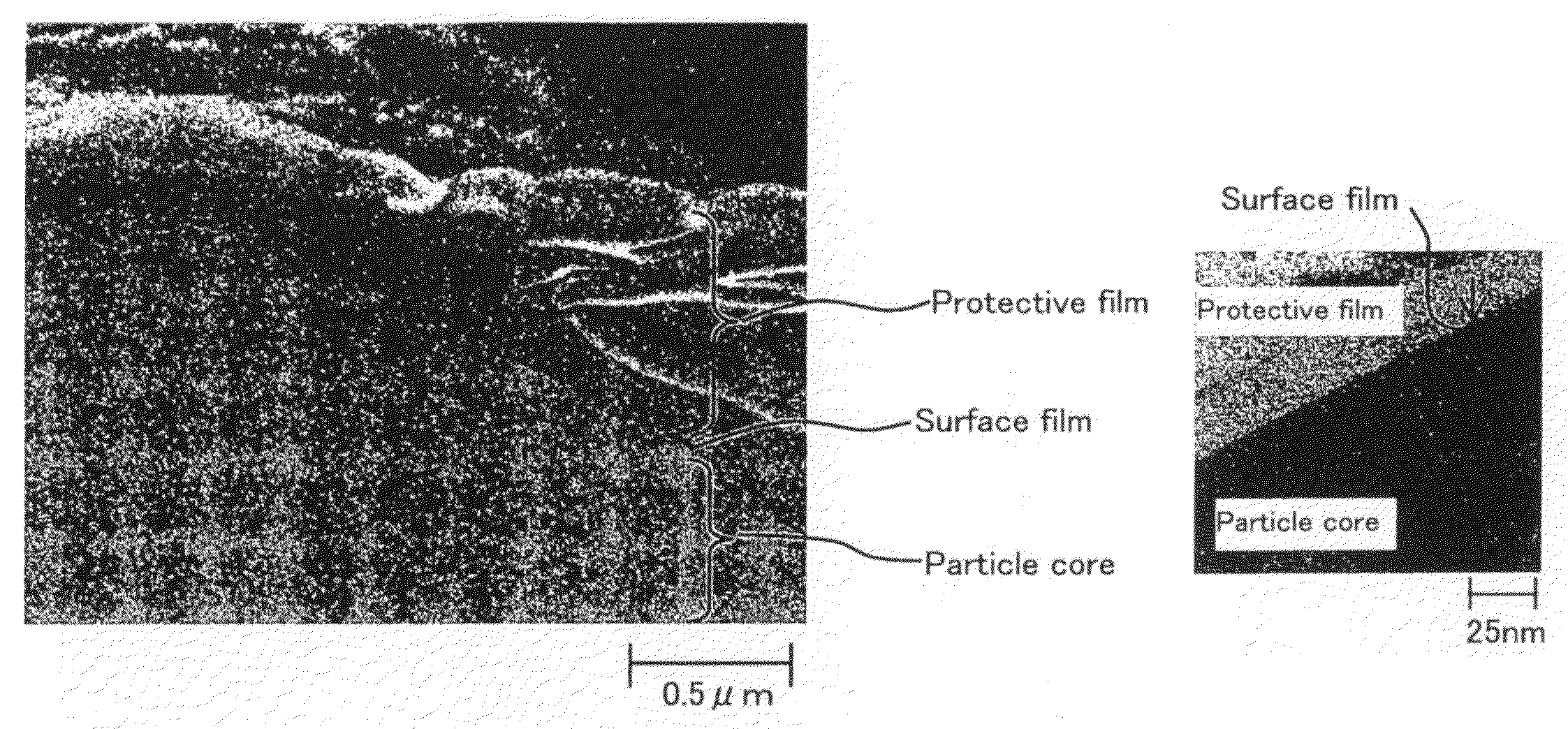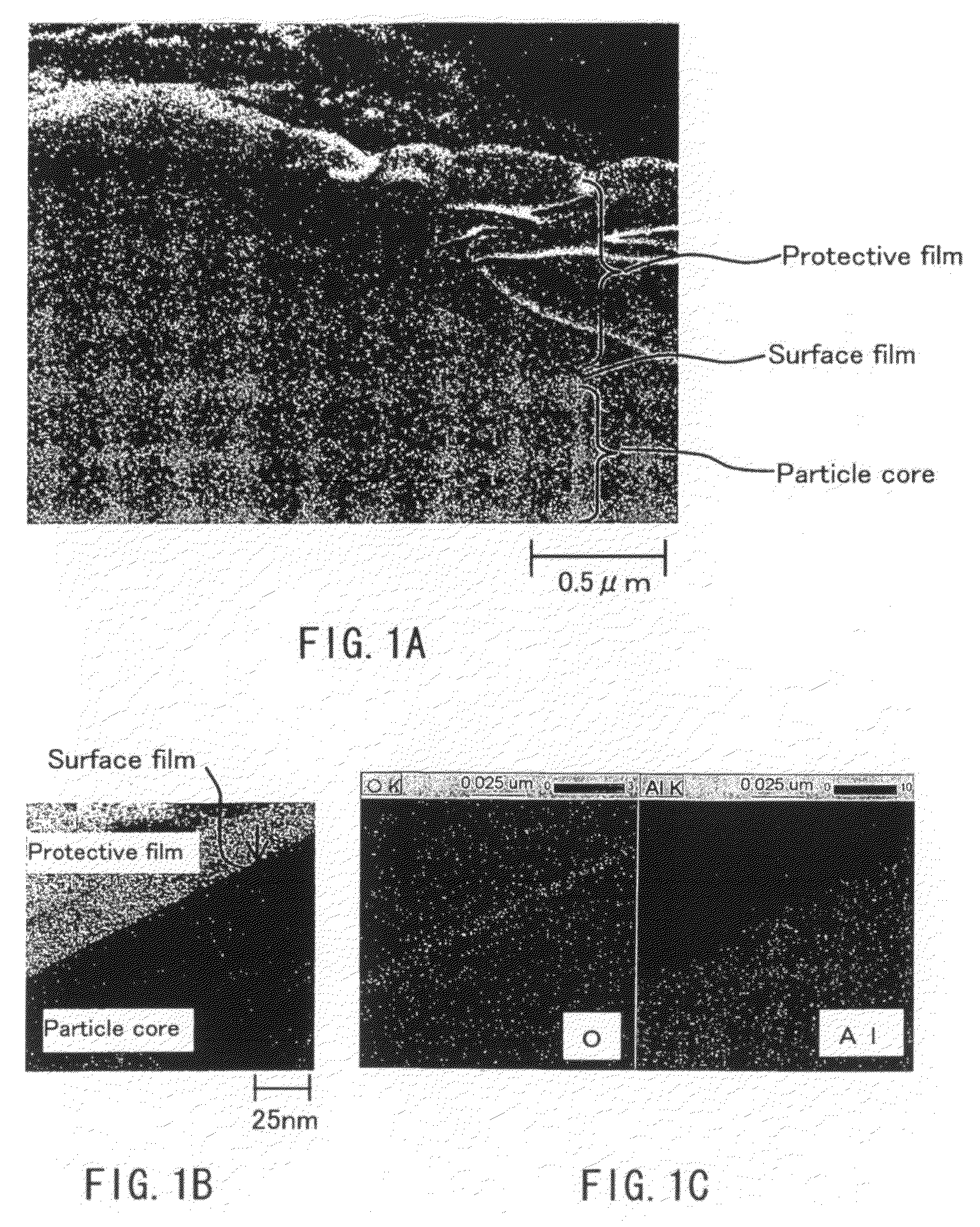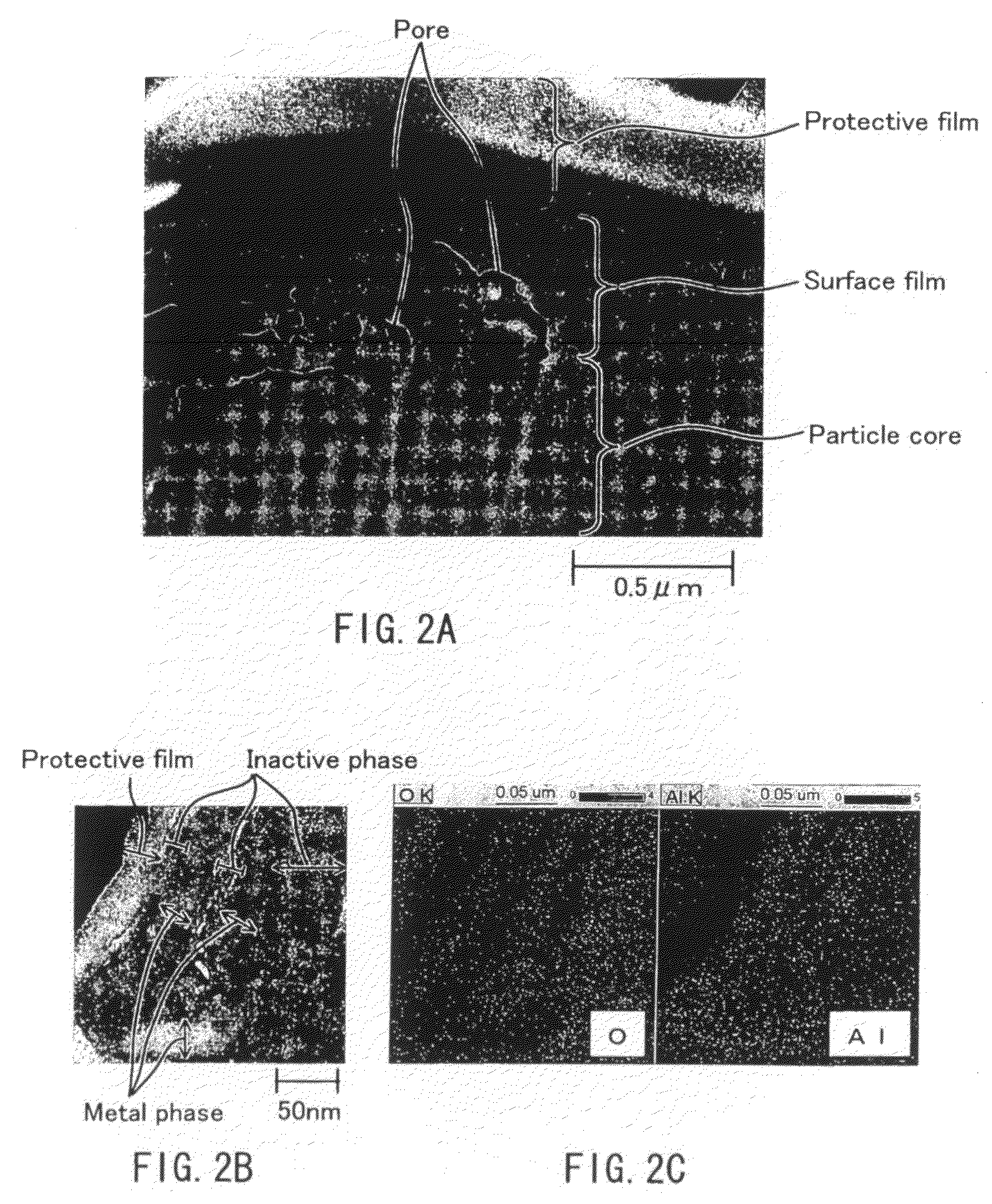Hydrogen generating material and method for producing the same, and method for producing hydrogen
a technology of hydrogen generator and fuel cell, which is applied in the direction of electrochemical generator, other chemical processes, sustainable buildings, etc., can solve the problems of reducing energy density, inconvenient operation, and inability to ensure continuous availability of lithium ion secondary batteries, so as to reduce the size of hydrogen generator or fuel cell, the effect of easy and efficient generation
- Summary
- Abstract
- Description
- Claims
- Application Information
AI Technical Summary
Benefits of technology
Problems solved by technology
Method used
Image
Examples
experiment 1
Preparation of a Metal Material and a Hydrogen Generating Material and a Hydrogen Generation Test
working example 1
[0078]In a grinding pot of a planetary ball mill were placed 5 g of aluminum powder with an average particle size of 55 μm that was produced by an atomizing method, 15 g of toluene, 1 g of water (0.2 parts by mass with respect to 1 part by mass of the aluminum powder), and 85 g of zirconia beads (particle size: 2 μm), and the aluminum powder was pulverized at a rotational speed of 200 rpm. Since hydrogen was generated during pulverization, the pot was rotated for 10 minutes, stopped temporarily to release the hydrogen generated inside, and then restarted its rotation. While this procedure was repeated, the pot was rotated for a total of 1 hour. Subsequently, the toluene and the water were removed by drying under reduced pressure, thus producing a metal material used for the hydrogen generating material of the present invention. The metal material lost metallic luster of the surface and appeared dark brown in color, and was in the form of irregular granular powder with an average par...
working example 2
[0087]A metal material was produced in the same manner as Working Example 1 except that the amount of water used for pulverizing the aluminum powder was changed to 0.5 g (0.1 parts by mass with respect to 1 part by mass of the aluminum powder). Subsequently, a hydrogen generation test was conducted, and the amount of hydrogen generated was measured in the same manner as Working Example 1.
PUM
| Property | Measurement | Unit |
|---|---|---|
| thickness | aaaaa | aaaaa |
| particle size | aaaaa | aaaaa |
| particle size | aaaaa | aaaaa |
Abstract
Description
Claims
Application Information
 Login to View More
Login to View More - R&D
- Intellectual Property
- Life Sciences
- Materials
- Tech Scout
- Unparalleled Data Quality
- Higher Quality Content
- 60% Fewer Hallucinations
Browse by: Latest US Patents, China's latest patents, Technical Efficacy Thesaurus, Application Domain, Technology Topic, Popular Technical Reports.
© 2025 PatSnap. All rights reserved.Legal|Privacy policy|Modern Slavery Act Transparency Statement|Sitemap|About US| Contact US: help@patsnap.com



